Matador Network's Blog, page 611
August 11, 2021
This adorable California winery’s vintage trailer park is the ultimate girl getaway

After two years of living in San Francisco, I became cynical about the California wine country experience. It was gorgeous, but always crowded. The wine was delicious, but always expensive. The food was fantastic, but I always ended up waiting an hour in the heat for a table. It took a trip down south to the Central Coast to understand that Napa and Sonoma represent just a small slice of the state’s viticultural experiences. The small city of Paso Robles offers an entirely different vibe, free of crowds or pretention. It also has one of the most dreamy vineyard accommodations: The Trailer Pond at Alta Colina.
The Trailer Pond is a set of five beautifully restored vintage trailers clustered around a small pond in the Alta Colina vineyards. It’s a glamping experience, but with the canvas tents swapped out for candy-colored trailers that date from between 1957 and 1962.
While I was having a low-key stay with my mother in late November, the immediate impression upon setting foot in The Trailer Pond is that it’s meant for a trip with your girlfriends. Swinging on a hanging chair overlooking the pond and the rolling vineyard hills, I daydreamed about coming here for my bachelorette party, posing with my bridesmaids on the dock, and clinking wine glasses.
Rather than spend a ton of money on the usual spots for a big group getaway, consider making a Paso Robles vacation your newest squad goal. From snapping endless pictures of your darling digs to soaking in natural hot springs, here’s why a trip to The Trailer Pond at Alta Colina is the perfect base for your next epic girl getaway.
Move into your new home at The Trailer Pond
Photo: Craft and Cluster courtesy of Alta Colina
The Trailer Pond is tucked in a private area of the 130-acre vineyard, well up the road from the main tasting room. Smaller parties are welcome to book individual trailers (each trailer sleeps two), but if you book out the whole pond, you’ll get some perks. Group bookings include a bottle of Alta Colina wine in each trailer and a complimentary group wine tasting during your trip. The Trailer Pond is Instagram gold, with pastel trailer exteriors, twinkle lights lining the walkway, cutesy lawn decor, and lounge chairs on the dock overlooking the pond.

Photo: Craft and Cluster courtesy of Alta Colina
On the far side of the pond are a basic communal kitchen, a large gas fire pit, cozy chairs, and a picnic table. Rustic bathrooms are located nearby, but more fancy bathrooms are accessible elsewhere on the property. If you request it in advance, the Trailer Pond is happy to coordinate a wide variety of experiences your group will love, such as a lesson in crafting the perfect cheese plate, art classes, and full farm-to-table meals at the Pond.
Enjoy as many tastings as possible
Photo: Laura Reilly
Alta Colina, owned and operated by the Tillman family, has been growing Rhône-style wines, most notably syrah and grenache, since 2003. The winery is almost 1,800 feet above sea level and is influenced by intense sun exposure and air from the nearby Pacific ocean. While most of the wine is affordable, one standout splurge is the Sun Worshiper, an intense mourvèdre-based blend with deep, dark notes of black fruits.
You’d be remiss not to take advantage of the many other nearby wineries in the Paso Robles viticultural area. Some of Matador Network’s food and drink editors’ favorites include DAOU Vineyards, ONX Wines, and Halter Ranch. Should you get wine-d out, Paso Robles is not lacking in breweries and distilleries. Tin City is an industrial market in the warehouse district that houses BarrelHouse Brewing Co., Tin City Cider Co,. Wine Shine distillery, and in case you’re not yet sated, more wineries. Across the region, you’ll also find a number of distilleries that focus on brandy and grappa made from Paso grapes, like Pendray’s, Calwise, and Azeo.
Take in all the views the Central Coast has to offer
Photo: Central Coast Trailrides/Facebook
Alta Colina is Spanish for “high hill,” which you can experience on the trailer park’s Sundowner Deck. The deck is perched on the top of, well, a very high hill, and is a must-see view, whether you take your coffee at sunrise or sip wine at sunset. Large groups at the Trailer Pond also have the opportunity to book a private tasting at the Sundowner Deck and perhaps, even a yoga class.
Paso Robles is rife with opportunities to explore those hills further. Traverse more wineries and private farms on horseback with Central Coast Trailrides. Go on an Off-the-Grid jeep tour through small production wineries you won’t find in any liquor store back home. Or just get out and hike the gentle rolling hills of the region for free. If you’re down for an epic excursion, drive over to the iconic coastal Highway 1 and head all the way up to Pfeiffer Big Sur State Park. It’s a two-and-a-half-hour drive one-way with nonstop jaw-dropping ocean views the whole way.
Hit downtown for food, shopping, and more booze
Photo: Rosângela Perry/Shutterstock
Alta Colina doesn’t typically offer on-site food, but that’s fine because you want to experience the downtown Paso Robles dining scene anyway. One solid option is The Hatch Rotisserie and Bar, which serves up decadent wood-fired food, like brown-butter skillet cornbread and pork shoulder with white cheddar grits, and craft cocktails utilizing seasonal ingredients. For those classic California wine country, farm-to-table vibes, Thomas Hill Organics has upscale plates like duck confit, chicken liver pâté, and local burrata with stone fruit. For a rowdier late-night scene, Pine Street Saloon is the local dive bar with super cheap drinks and, apparently, a few resident ghosts.
If you love a little retail therapy, there will still be a few shops open for the evening crowd, but you’ll mostly find yourself peeking into closed windows wishing you could browse inside. So try to dedicate some time during the day to explore the eclectic shops, art galleries, antique stores, and fashion boutiques. If you only have time to hit one store before you leave, make it the General Store, which stocks local crafts from artisans, snacks and sweets, and quirky gifts for every age.
Relax in natural mineral hot springs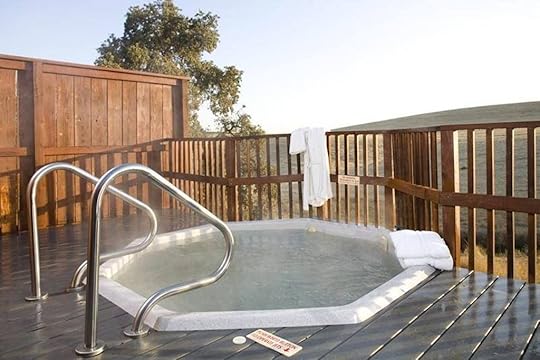
Photo: River Oaks Hot Springs Spa/Facebook
If you’re staying at a winery with your best friends, surrounded by even more wineries, breweries, distilleries and great bars, there’s a more than likely chance you’re going to wake up one morning with a slight hangover. Rather than call the whole day a wash, treat yourself to doing nothing at one of Paso Robles spas. Many of the wineries will mention Paso Robles’s mineral spring water as an attribute to the overall soil quality at the vineyards, and visitors can soak in some of the mineral hot springs. For a luxury experience, visit the River Oaks Hot Springs Spa, which offers various treatments in plush surroundings, like hot stone massages, hydrating facials, and a private session in the mineral hot tub. For an ultra-rustic dip, head to Franklin Hot Springs. Entrance is only $7 a person on the honor system — just deposit it in a can out front. We can’t think of a better way to end a trip than a quiet, steamy 100-degree soak in nature. 
The post This adorable California winery’s vintage trailer park is the ultimate girl getaway appeared first on Matador Network.
A sex worker explains why moving Amsterdam’s Red Light District is bad for everyone

“They say sex work is not normal,” Mary told me on Matador Network’s No Blackout Dates podcast, sounding both perplexed and disheartened. “But who decides what is normal?”
This tug-of-war between what’s normal and what isn’t characterizes some of the most important debates of our time. The “normal” is tolerated and encouraged, while the “abnormal” is outlawed and its practitioners shamed. In Amsterdam, famous for its positivity and liberalism, prostitution is slipping into the “abnormal.”
Mary has worked as an escort in Amsterdam for eight years. To her, sex work is a profession like any other, and the Red Light District is the most infamous of offices. Now that office is being uprooted from its historic home to be moved outside of the city center, all under the pretext of shielding the women from the ill-effects of over-tourism.
Femke Halsema, Amsterdam’s mayor, put forward a proposal earlier this year to shut down a significant number of Red Light District windows around the docks — a proposal backed by several political parties. Sex workers would be forced to relocate to a purpose-built center elsewhere in the city. Halsema told The Guardian that the brothel windows should be closed to protect the women from “gawking tourists” who verbally abuse sex workers and treat them like tourist attractions. Sex trafficking and over-tourism were also cited as concerns.
Moving the Red Light District outside of the city center, as well as banning cannabis for foreigners, might sound like it addresses safety concerns and the city’s over-tourism problem, but the reality is much more complicated.
Sex work is part of the neighborhood
Photo: hurricanehank/Shutterstock
Sex work has always been a victim of image and perception. A neighborhood widely known as a city’s epicenter of prostitution might sound disreputable, but in Amsterdam, the Red Light District is a neighborhood like any other.
Prostitution in Amsterdam dates back to at least the 15th century, and the modern Red Light District is in the oldest section of the city. It’s something that residents have grown up knowing.
“I was born and raised in Amsterdam,” Mary says. “You always knew about the Red Light District and saw the ladies in the windows. Even as a small child, you got used to it. We asked our mom, ‘What are they doing?’ And she said, ‘Well for gentlemen who don’t have girlfriends, sometimes they want to kiss and cuddle with a girl, so they can give one of the girls some money, and they can kiss and cuddle with them.’ And we thought, ‘Oh, what a funny profession.’”
The reason a child can walk through the Red Light District unfazed isn’t because children are ignorant, Mary says. It’s because they haven’t yet been trained in the adult art of judging others.
“As a child, you’re not subject to moral judgment,” Mary says. “It was only when I started instructing tourists about the Red Light District that I realized that to some people it’s not as normal as it was to me.”
Despite the current relocation attempt, Amsterdam is still far more tolerant and open-minded toward sex workers than much of the world. Several sex worker windows are located opposite a church, and others are next to children’s daycare centers in a residential area — and few seem to care.
“That’s what makes it kind of special,” Mary says.
Legal sex work is safer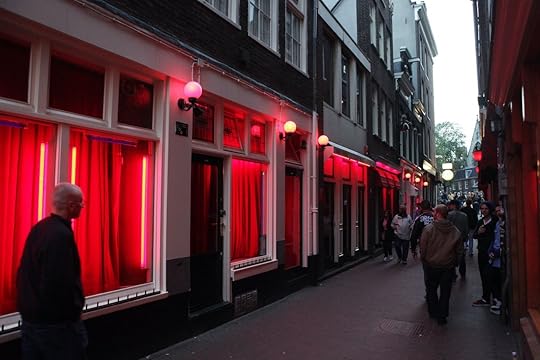
Photo: Raisa Kanareva/Shutterstock
Constantly warring against its own stigma, sex work often calls to mind desperation rather than entrepreneurship, and the women tend to be viewed as helpless and fragile. In Amsterdam, that couldn’t be further from the truth.
Compared to US underground services or prostitutes for hire, Mary says, “Window work is the safest and most independent way to work, because you can select your clients. And if you have trouble, you can call the police, and the police will help you instead of arresting you and raping you, which is very common in countries where it’s illegal.”
A 2018 study that looked at sex work from 130 studies in 33 countries found that sex workers in places where it’s illegal were three times more likely to experience sexual or physical violence. Those in places where sex work is legal or tolerated were half as likely to have sexually transmitted diseases.
Not only can sex workers feel confident that law enforcement will actually protect them in Amsterdam, neighborhoods like the Red Light District also afford sex workers a sense of safety through community.
“The women don’t want to leave,” Mary says. “They love that area because it’s very compact and busy, and that means you’re safe even if you leave your shift at 4:00 or 5:00 AM. There’s always people around, we all know each other, there’s a lot of police cameras. It’s very safe.”
Yet another pillar of the safety conversation is, of course, safe sex. There tends to be a misconception is that sex in the Red Light District is unprotected and that the sex workers must be riddled with STDs. Again, this couldn’t be further from the truth. Sex workers always use condoms, and Mary says they put them on themselves “so we know it’s done right.”
Sex workers even have their own dedicated health care locations to prevent the spread of STDs, Mary explains, and the checkups are free of charge and anonymous. Treatment is also free. The result? Visiting a sex worker is safer than going home with someone from the nightclub because, as Mary notes, STDs among female sex workers are lower than the national average.
Sex workers provide a valuable service
Photo: charnsitr/Shutterstock
Movies, media, and public perception often suggest that prostitution exists to satisfy the salacious desires of a sleazy clientele, and they make it easier for men to cheat on their wives. In reality, many clients are simply men who lack intimacy in their lives.
“I was a nurse for many years and realized during my work that people may have handicaps or disabilities, but need intimacy and sex just like anyone else,” Mary says. “As a nurse, you really can’t do anything for them. I felt sorry for them, and when I read about agencies that mediate between clients and sex assistants, I thought, ‘Wow that’s the job for me.’”
Just as sex workers themselves are judged for their profession, clients are also shamed. But people rarely consider the other side of sex work. Mary’s clients, for example, are mostly those with mental or physical disabilities. Her oldest is 95 years old.
Destigmatizing clients is just as important as destigmatizing sex workers themselves, especially in places where the profession is under attack. For many men, seeking out a sex worker isn’t a shady escape from wholesome family life. Whether due to age or a disability, Mary’s clients rely on sex work for the human connection they can’t find elsewhere.
Sex trafficking and over-tourism are just excuses for moving the Red Light District
Photo: Osaze Cuomo/Shutterstock
The story of sex work has always been intertwined with a narrative of persecution and marginalization. Even Amsterdam sex workers aren’t exempt from this. The downside of working in a misunderstood profession is that people, well, don’t understand it, and that lack of understanding can, unfortunately, translate into official policy. Governments, activist groups, and religious organizations in Amsterdam are presuming to know what’s best for sex workers and how to keep them safe without actually asking them.
According to Mary, the biggest threat to the sex industry in Amsterdam is politicians and religious organizations, who have made it their mission to stamp out sex work in the guise of fighting human trafficking.
“Human trafficking does exist,” Mary acknowledges, “but it exists in many other industries as well which you never hear about. Between 80 and 90 percent of sex workers in Amsterdam are doing it of their own free will, because they like it and because they can make good money. Though many might not believe it, the vast majority of sex workers in Amsterdam choose the profession willingly. That hasn’t stopped agenda-driven organizations from presuming to understand their motivations, and trying to make it harder for them to work.”
Religious groups have long been at the forefront of the opposition to sex work
“One of the Christian political parties passed a law saying all sex workers must be registered in a national database,” Mary says, “and that’s against the law of privacy. They say it’s to fight human trafficking, but it’s really to make it as hard as possible for sex workers to do their job. Funny enough, one of my colleagues always says that the Christians are her best customers.”
One activist group even proposed that sex work clients should be criminalized. That proposal was rejected, but it points to the deep lack of understanding and compassion that courses through the anti-sex work movement.
“What about people with special needs?” Mary says. “They must often rely on professionals to meet their intimacy needs. But the politicians and religious groups never think about that side of the industry.”
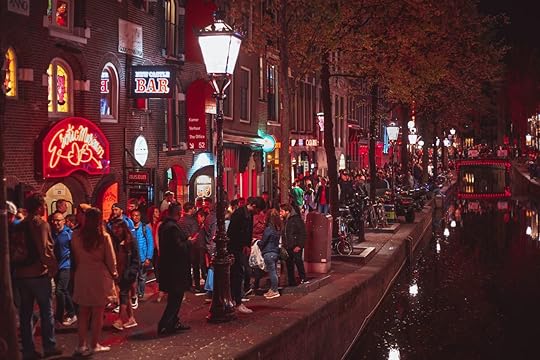
Photo: hurricanehank/Shutterstock
Overtourism is another pretext being cited for moving Amsterdam’s Red Light District. The city is famous for legal prostitution and also suffers from over-tourism. Therefore, one line of thinking goes, the two must be linked. It’s a convenient “correlation equals causation” argument made by conservative politicians and religious groups looking for an excuse to whisk prostitution out of the public eye.
“They think the sex workers bring too much tourism, and we get the blame for it,” Mary says. “However, the city did an inquiry a few years ago and asked if people would still visit the Red Light District neighborhood if there were no prostitutes. Only 5 percent said no they would not, meaning 95 percent would still visit even without sex workers. It’s an entertainment area — there are lots of cafes and restaurants — and that’s what attracts the people.”
The relocation of the Red Light District is just one tactical maneuver in the battle of “normal” vs. “abnormal.” Yet prostitution is not only an inextricable part of Amsterdam’s fabric; it’s also a valuable service essential for those struggling to satisfy their intimacy needs, as well as a safe alternative to the underground sex industries that pervade other countries. That sounds pretty normal to me. 
The post A sex worker explains why moving Amsterdam’s Red Light District is bad for everyone appeared first on Matador Network.
How to take your family on an African safari
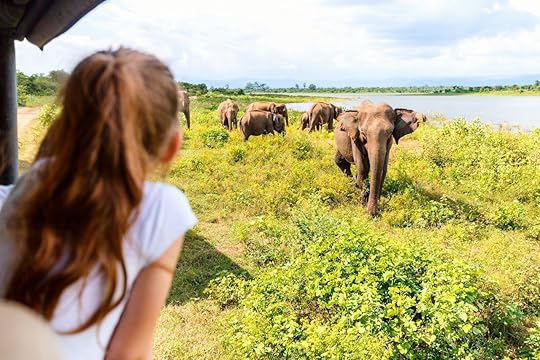
Three hours in line, waiting with two teenagers in the pre-dawn chill for the National Park rangers to open the gate? Never again, I told myself, heading back to the lake and our cabin.
But it got me thinking. Maybe it was time to plan that African safari we’d been telling the kids about for so long. Aged 11 and 12, they were finally old enough to enjoy it. And an hour on the phone with my favorite travel agent, a person I’d worked with before, proved to be the solution.
By the time I’d hung up the phone, we’d worked out an itinerary starting with dates and in-country flights, an arrival hotel in Johannesburg, South Africa, and four nights each at three game lodges in South Africa, Botswana and Zambia, countries where wildlife conservation projects are a part of public policy, and the reason that the animals — elephants, lions, giraffe, antelope, rhinos — continue to thrive.
But for first-timers, hoping to explore Africa’s wild country, finding the right safari lodge can be a challenge. Thirty years ago, there weren’t more than a dozen private lodges and ranches interested in taking guests. Now there are plenty of game lodges, most of them located on public and private land inside parks and wildlife preserves. The choices run from tiny rustic bungalows and former hunting lodges to family-style cabins and luxury hideaways. The largest of them, bustling resorts encouraging family travel, provide not just daily game drives and lavish meals, but spas, gyms, guided village tours, teen activities and child care play centers.
Where to start your search for an African safari with family
Photo: BlueOrange Studio/Shutterstock
Since every lodge has its own website — or is part of a group website — it’s easy to see what’s available. Start your education with a leisurely tour through two of them, Uyaphi.com and Go2Africa.com, travel and touring companies that book family, individual, group, and customized safaris. Their websites are a treasure trove of photographs, descriptions of locations, site types, indoor and outdoor areas, porches, gardens, prices per night, per person, and extra activities, from canoe rides to walking safaris, spa visits and swimming pools.
Safari lodges have always welcomed children. But now they’re encouraging it, adding additional two-bedroom suites and building larger cabins. Small lodges, those built for six to ten guests, actively court group travel, offering discounts when you book the entire lodge.
When you’ve found something that works, search for its name and group affiliation or an individual contact, a person who can answer your questions. A partial list of top-rated companies include Sanctuary Retreats; Ker & Downey; Wilderness Safaris; Bushcamp Company in Zambia; and SabiSabi Company.
Why you should consider using a tour company to book an African safari with familyIt is certainly possible to book a flight to an African country and your own game lodge reservations. But most North American travelers would rather spend more for a trip planned by an experienced full-service tour company with supporting staff on the ground. It’s a relief to be met upon arrival, helped with luggage, driven to your hotel or lodge, and to have help with visas, customs and local currency — especially if you are traveling with children.
Why some of my favorite family safaris could be yours
Photo: Sabi Sabi Private Game Reserve
If it’s a big, lively lodge you enjoy, one with 25 luxury suites and an ideal place to meet other travelers and their children, try Little Bush Camp in the Sabi Sands Preserve, in South Africa’s Kruger National Park. As diverse as any resort, its activities include traditional game drives, cultural community visits, swimming pools, a spa, gym, a child-care play center, gift shop, and a waterhole near the dining room, where you can enjoy lunch and watch the elephants congregate.
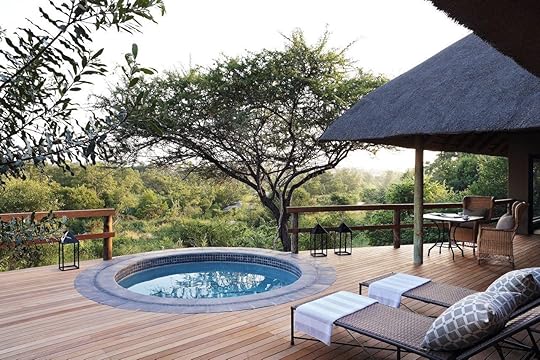
Photo: Londolozi Game Reserve/Facebook
My first-ever and all-time favorite game lodge is Londolozi, also in Kruger National Park, a sentimental favorite. Now enlarged and divided into four different lodges, it remains true to its origins as the country’s first leopard conservation project.
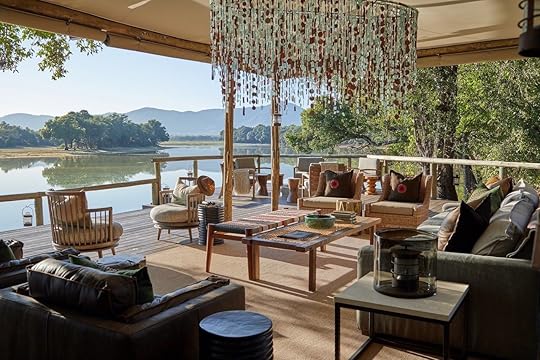
Photo: The Bushcamp Company/Facebook
In Zambia, the Bushcamp Company Group, in the South Luangwa River National Park, is special. The main lodge, with an open-air lounge, casual restaurant and 12 separate cabins is a 30-minute drive from Mfuwe town, an easy-to-reach getaway for families traveling with kids, and area residents who come for an overnight. It’s also headquarters for the company’s eight other distant lodges, intimate, isolated and rustic hideaways. These lodges all have distinct names and are a perfect size for a family of four or less. Lodge Bilimugwe is cozy and close to elephants and at lodge Chamilandu you can spend a morning in a hide, watching the animals come to drink in the nearby creek.
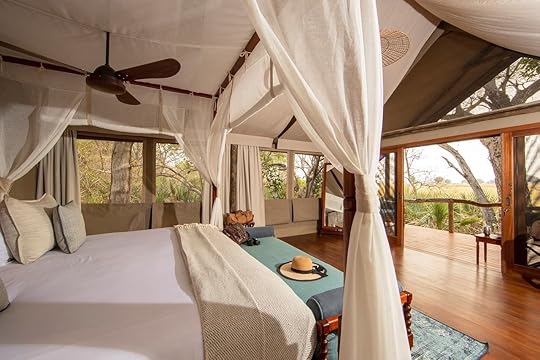
Photo: Ker & Downey Botswana/Facebook
My Botswana favorites are all in the Okavango Delta and are traditional lodges with tent cabins for guests which are bolted onto wood decks, per conservation regulations. If you are interested in the Okavango Delta have a look at Shinde which is close to water and open plains, and Kanana, which arranges mokoro (canoe rides) to birding islands. Chief’s Camp and Stanley’s Camp are also great options for families and are located on wooded islands and near surrounding lagoons.
How much does an African safari with family cost?
Photo: Londolozi Game Reserve/Facebook
Do game lodge prices really reflect luxury, service and all meals? Yes, those that charge over a thousand dollars per person per night guarantee first-rate mattresses, matching linen, leather armchairs, chef-prepared cuisines and notable wines.
But are the guides and trackers, employees who lead you through into the same bush country, more effective than those working at lodges charging $180 per night? That’s where you have to do a little research. Guides, the drivers, are often hired from outside, whereas the trackers, who sit on the fender searching for tracks in the dust, are local residents who’ve grown up with wildlife. If your goal is to see lions, rhinos, hippos, giraffe, wild dogs, hyenas and elephants in their natural surroundings, then ask in advance about the trackers when booking. Keep in mind a hefty price tag does not guarantee the best animal spotting.
How to keep your family healthyThe mosquitoes that carry malaria are rarely a threat during Southern Africa’s dry months, from July to mid-October. If mosquitoes are present, protect yourself and your family by covering up in light-colored long-sleeve shirts and long pants and applying insect repellent. A course of prophylactic drugs, started before you go and for a period of time after your return, is recommended.
Travel and medical insurance are also essential, especially when traveling with youngsters on safari.
When to book an African safari
Photo: BlueOrange Studio/Shutterstock
June through August (winter) are dry, high months, with cool to cold nights and mild, sunny days. September and October are warm and dry; it’s not as green, but animals are much easier to see, in the bush or at the waterholes. December, January and February bring rain which leads to muddy roads that can cause delays in travel. 
The post How to take your family on an African safari appeared first on Matador Network.
This company wants to fly you to Barcelona for free for a concert at the Sagrada Família

If you’ve been craving travel and live music for the past 16 months, this contest is meant for you. Booking site Tiqets is launching a contest in which five lucky people will get a chance to win an all-expense trip to Barcelona and tickets to an exceptional concert.
The Symphonies at Sagrada contest includes flights from the US and ground transportation; accommodation in Barcelona; free access to three Barcelona museums and attractions of your choice; and, the cherry on the top, an intimate classical concert at the Sagrada Família.
The winners will be able to hear the fantastic Vienna Philharmonic Orchestra concert in the Sagrada Família on Saturday, September 18, 2021 and have access to the preview show of the performance in the basilica on Friday, September 17, 2021.
The free trip will take place from September 17 to September 19, 2021, and the five winners will be able to bring a friend along for the ride.
“We are excited to partner with Sagrada Familia to create a truly once-in-a-lifetime trip to Barcelona to experience the basilica like never before,” says Laurens Leurink, CEO of Tiqets, in a press release. “The highlight of the experience is an intimate concert inside Gaudí’s masterpiece brought to life by the sounds of the symphony.”
Be quick to enter, the contest closes at l1:59 PM CT on August 25. 
The post This company wants to fly you to Barcelona for free for a concert at the Sagrada Família appeared first on Matador Network.
The cheapest, and most expensive, states to buy a pizza in

When you don’t know what to eat, pizza is often the simplest and quickest way to go. America’s love for pizza can’t be denied, and from time to time, munching on a pizza is fulfilling. What isn’t fulfilling is paying for overpriced pizza. Expensivity mapped out the average price of pizza in every US city and state to find the average price by city and the density of pizzerias per person in the US.
All prices, pizzerias, and menus were gathered from MenuWithPrice, and Yelp. The company also estimated the number of pizzerias in every city and state. Due to the imprecise menu data, the average prices reflect pizzas of all sizes.
City and state populations were gathered from the U.S. Census Bureau, and cities that had at least 10 pizzerias and a population of 100,000 or more people were included in the final data set. You can visit the Expensivity website for more information on this year’s pizza index for more pizza data.
Cheapest cheese pizza
Photo: Expensivity
North Dakota$6.64
Rhode Island $6.68
Massachusetts $6.67
Oregon $6.96
Utah $7.00
Delaware $7.01
Ohio $7.02
South Carolina $7.10
New Hampshire $7.14
Indiana $7.15
Alaska $9.21
Oklahoma $9.00
Montana $9.07
Vermont $8.83
Connecticut $8.76
Pennsylvania $8.72
Kentucky $8.60
Mississippi $8.56
Kansas $8.51
Wyoming $8.39

Photo: Expensivity
Utah $6.49
West Virginia $7.70
Pennsylvania $8.08
Tennesse $8.70
Virginia $8.93
New York $9.20
South Carolina $9.40
Vermont $9.41
Massachusetts $9.48
Connecticut $9.62
Oklahoma $15.56
Iowa $15.38
Kansas $14.96
Alabama $14.77
Hawaii $14.25
Kentucky $14.16
Alaska $13.89
Minnesota $13.74
Nebraska $13.39
Oregon $13.00

Photo: Expensivity
Rhode Island: 37.3
Connecticut: 36.8
Pennsylvania: 36.2
New Jersey: 35.7
Iowa: 34.6
Delaware: 34.0
New Hampshire: 33.5
Ohio: 32.0
West Virginia: 31.2
New York: 29.4
The post The cheapest, and most expensive, states to buy a pizza in appeared first on Matador Network.
If you and your bae met during the pandemic, you could win a trip to the Caribbean
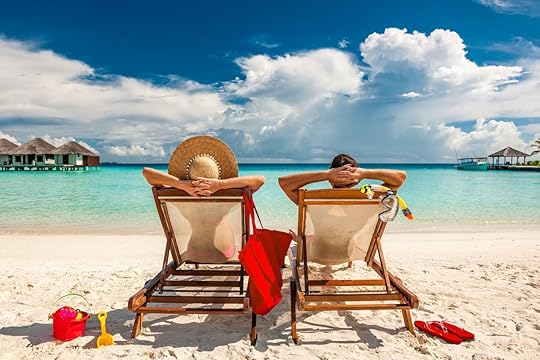
If you were in a relationship before the pandemic started, good for you. Congrats on the human contact. If you were single going into the pandemic, my heart truly goes out to you. 2020 and early 2021 were perhaps the worst months in human history for meeting people. It was like a sadistic social experiment engineered to see how single people could survive without bars and Tinder dates. Some of us fared better than others, somehow managing to not only date but actually find a relationship during a pandemic. If that describes you, Sandals Resorts wants to make the rich richer by rewarding you with a free stay at one of its Caribbean resorts.
The Sandals Swipe-Stakes is designed for couples who met their current partner on a dating app or social media during the pandemic. Since you probably spent the first part of your relationship wearing masks and with limited date options, Sandals wants to help you make up for lost time.
According to Sandals, couples can “enter to win the dreamy honeymoon phase they never got, courtesy of the experts in love and romance at Sandals. The requirement? Couples must prove that they met online during the pandemic (March 2020 onward) by uploading a screenshot of their dating app match or first social media DM.”
Entries can be made to the Sandals Swipe-Stakes online from August 10 to September 2021, and the winning couple will receive a three-night stay at one of Sandals’ 16 all-inclusive resorts in Jamaica, Antigua, Grenada, St. Lucia, the Bahamas, Barbados, or Curacao. 
The post If you and your bae met during the pandemic, you could win a trip to the Caribbean appeared first on Matador Network.
Puerto Rico travel guide

This time last year, vacations were a tenuous and nerve-wracking prospect. Vaccines weren’t yet available to the public and restrictions were in place that made travel far less appealing to prospective tourists. Although the Delta variant poses a serious threat, vaccines are widely available and those who take them are largely protected even against this new, more transmissible strain of the virus. For vaccinated travelers, Puerto Rico is an ideal place to dip your toes into travel once again. Vaccinated US citizens are permitted to visit the island without restriction, and freely enjoy all the island has to offer.
Puerto Rico is also blessed with outdoors that make social distancing easy, including the only tropical rainforest operated by the US National Forest Service. It’s an easy sell, really. Here’s everything you need to know about visiting Puerto Rico.
Entry requirements and COVID testingWhat’s open in Puerto Rico?Staying in San Juan A crowd-free island experience to the west Explore El Yunque National ForestEntry requirements and COVID testingPuerto Rico is welcoming air travelers at three ports: the Luis Muñoz Marín International Airport in San Juan, Mercedita International Airport in Ponce, and Rafael Hernández Airport in Aguadilla. Fully vaccinated US visitors are no longer required to have a negative COVID-19 test before entering. Unvaccinated US travelers, however, must still show a negative PCR test taken no more than 72 hours before arrival. All travelers are still required to submit a Travel Declaration Form prior to their trip, which includes uploading your official Vaccination Card as proof of vaccination.
What’s open in Puerto Rico?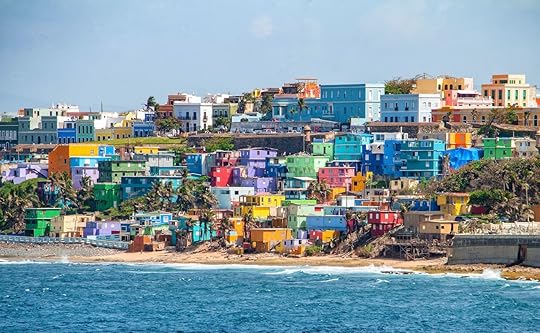
Photo: Martin Wheeler III/Shutterstock
There’s good news for travelers seeking a literal and figurative breath of fresh air in Puerto Rico: Outdoor spaces like beaches, nature reserves, and golf courses are open. All businesses, including bars, museums, gyms, theaters, casinos, supermarkets, salons, and spas, are open and operating at full capacity. The island also recently eliminated its nightly curfew, meaning guests are free to explore the island into the evening hours. Just note that masks are required in all indoor spaces regardless of vaccination status, and advance appointments may be needed for certain services.
As of August 16, Puerto Rico will require all guests of hotels and short-term rentals like Airbnbs to be vaccinated. Those not vaccinated must show a negative PCR or antigen test taken within 72 hours of the beginning of their visit. Negative tests must be shown on a weekly basis if the visit lasts longer than a week. Anyone found violating this rule will be fined up to $5,000 or face six months in jail.
For more information on what to expect, consult the Discover Puerto Rico website.
Staying in San Juan
Photo: Gem Russan/Shutterstock
Anyone visiting Puerto Rico should try to see as much of the island as possible, but it’s likely that you’ll be spending at least a day or two in San Juan. Just because you’re in the capital city, however, doesn’t mean you need to be squeezing through crowds of tourists. There’s no shortage of beaches on the island, and San Juan is no exception. Condado, Ocean Park, and Pine Grove beaches are all located within city limits, and a great break from the urban environment.
There’s no doubt that Old San Juan is the city’s premier tourist area. It’s currently only open to residents and tourists who are staying in the area, however, so you may want to consider booking your accommodation there. While its cobbled streets, fort of Castillo San Felipe del Morro, Castillo de San Cristóbal, and nearby Santa María Magdalena de Pazzis Cemetery are among the city’s most famous attractions, you can also enjoy a less crowded version of San Juan by staying in the newer Ashford Avenue, the main drag of the Condado neighborhood. The modern street runs right along the beach and is replete with cafes, restaurants, and resorts.
The Old Town alternative to Ashford Avenue is Paseo de la Princesa, which means “walkway of the princess.” Located just outside the walls of Old San Juan to the south, Paseo de la Princesa is a 19th-century avenue that has Old World charm without the crowds that typically clog the narrow streets inside the city. Ambling down the street, and through the plaza, you’ll have a great view of San Juan’s historic fortifications. The street is defined by its antique lamp posts, stone fountains, street vendors, and views of the old city walls.
Around San Juan, you’ll quickly notice an abundance of street art murals. The capital is full of colorful artwork that will really liven up any walking tour. The Calle Cerra, and adjoining side streets, are particularly known for their colorful art. And if you happen to be visiting in August, you’ll be treated to the Santurce es Ley contemporary art festival, where street artists decorate empty parking lots and old buildings with large murals.
A crowd-free island experience to the west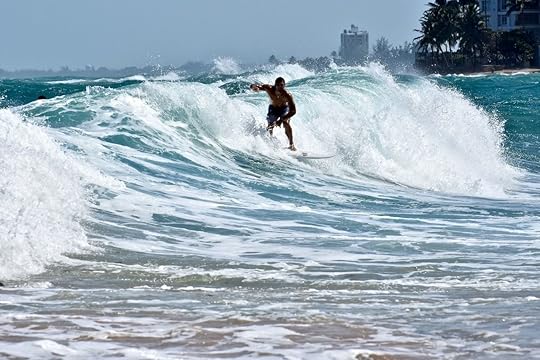
Photo: Jeramey Lende/Shutterstock
You can have an epic Puerto Rico vacation without ever setting foot in San Juan. From rainforests to hidden beaches, there are plenty of ways to get the full experience while keeping your distance from others.
It’s currently only open to residents and tourists who are staying in the area, however, so you may want to consider booking your accommodation there. While its cobbled streets, fort of Castillo San Felipe del Morro, Castillo de San Cristóbal, and nearby Santa María Magdalena de Pazzis Cemetery are among the city’s most famous attractions, you can also enjoy a less crowded version of San Juan by staying in the newer Ashford Avenue, the main drag of the Condado neighborhood. The modern street runs right along the beach and is replete with cafes, restaurants, and resorts.
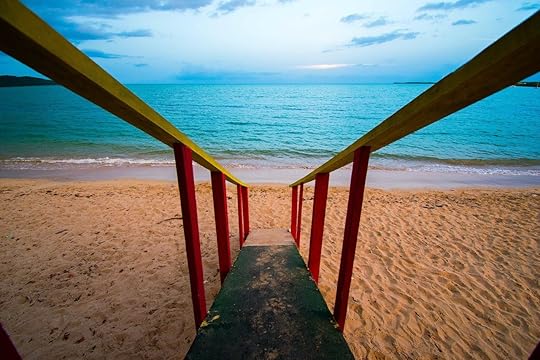
Photo: nestorportalatin/Shutterstock
Just south of Rincón lies Cabo Rojo, another area perfect for escaping the crowds and indulging in the island’s natural beauty. In the southwest, Cabo Rojo is known for its beaches, dramatic limestone cliffs, and restaurant scene. Its name is a reference to the water’s reddish color where the salt flats are located, due to a high concentration of salt. The salt flats here are seriously impressive and one of the island’s most beautiful hidden landscapes. Perched atop the cliffs of Cabo Rojo, the observation deck of Los Morrillos Lighthouse offers one of the best views in the area, looking out over the sea, and it’s probably the best way to admire the surrounding cliffs. For a more active experience, take one of the hiking trails to Cabo Rojo’s natural stone bridge.

Photo: Ilya Sviridenko/Shutterstock
A short drive from Cabo Rojo, you can find La Parguera bioluminescent bay. It may not be as famous as Mosquito Bay in Vieques, which is closer to San Juan, but you’ll find fewer crowds. Better yet, it’s the only bioluminescent bay on the island that allows motorboats and swimming, versus just paddling. Take a boat tour, kayak, or just go for a dip and enjoy the surreal feeling of swimming among the glowing dinoflagellates.
Explore El Yunque National Forest
Photo: Dennis van de Water/Shutterstock
As you’ll soon learn from spending just a few days in Puerto Rico, rainforests aren’t just for South America. El Yunque National Forest, the rainforest near the east coast of the island, is open to visitors with limited capacity in main recreation areas. All other areas in the park are open with social distancing measures enforced. To access the main recreation areas, you’ll need a reservation, which can be made online.
Two of the best hikes in the area are the trek up to Mount Britton Tower and the El Yunque Rock Trail. At the end of both, you’ll have a great view all the way to the coast. To cap off your rainforest experience, take a refreshing dip in the Mameyes River. The El Angelito Trail ends at a rope, which you can use to swing right into a swimming hole.

Photo: ButtermilkgirlVirginia/Shutterstock
There are a few waterfalls in El Yunque National Forest, but for a truly dramatic waterfall experience, drive out west to Gozalandia Falls. About 30 minutes from the city of Aguadilla on the island’s west coast (and an hour from Rincón) Gozalandia Falls are a tranquil getaway in the heart of one of Puerto Rico’s most beautiful jungles. The falls lie at the end of a short hike through the trees, spilling into a pool that’s perfect for swimming. While there will probably be locals there jumping off the falls or using the rope swing, it’s one of Puerto Rico’s more secluded experiences and a great break from civilization. 
A version of this article was previously published on July 20, 2020, and was updated on August 11, 2021, with more information.
More like thisCOVID-19These countries are open to vaccinated touristsThe post Everything you need to know about visiting Puerto Rico appeared first on Matador Network.
New Mexico’s incredible Bats Flight is happening right now at Carlsbad Caverns

This is the monthly Wildlife Spotlight, where we highlight the best time to see certain animals in all their splendor.
For much of the year, the casual observer climbing down the zigzagging edge that lines the jaws of the Earth’s crust at Carlsbad Caverns National Park in New Mexico might miss the swiss-cheesed pattern around the walls where all the sparrows and bats live out a portion of the year. But not in August and September.
Right now, these multi-colored nooks and crannies are currently alive with the flapping and screeching of both birds and mammals. This writhing mass bubbles with cacophonic howls and hints at the grandiose exodus the bats make from the mouth of the megacave each dusk for the Bat Flight.
The bats’ safety comes first
Photo: Doug Meek/Shutterstock
With each occasion, the horde pours out counterclockwise, flocking southwest towards the distant lights of rest stops and banks along the river. The fact that cameras, electronics and anything else that can buzz or flash is strictly prohibited only adds to the allure and mystery of the event. But they won’t be around for much longer.
For several months in Spring, the Bat Flight amphitheater of cement and stone seating was roped off as a safety measure against the pandemic. That didn’t stop tourists and park visitors from gathering in the parking lot of the visitor center to see it. With their cameras pointed into the sky they wandered back and forth in the parking lot trying to follow the bats as they launched out into the darkness. With the relaxation of some COVID measures, the Bat Flight finally is once again being made available to the public.
“It’s spectacular,” Says Rodney Horrocks, who is the Chief of Resources for Carlsbad Caverns National Park. “The Bat Flight has been given here at the park since the 1920’s along with a program called Bats and Their Habits. Now we have lots of different programs given our interpretive staff.”
More bat species than have even been seen
Photo: National Park Service
Not to be confused with a common-sized flapping flock, the Bat Flight is of truly terrifying scale, like an earth-and-smoke-colored waterfall flowing upward into the sky. In the hour or so that the event lasts there are trickles and spurts, and then a flood comprised of several hundred thousand of the screeching mammals. That’s between twelve and seventeen subspecies of bat, including cave myotis, fringed myotis, and a favorite among photographers: the Brazillian free-tailed bat.
One subspecies of bat hasn’t even been discovered alive yet, but according to Pam Cox, Carlsbad Caverns National Park’s Supervisor with the Department of Interpretation, “We know it exists because the skeletal remains have been found.”
From studying the bats, zoologists have further discovered each species live in completely separate areas within the cave, which makes it easier for NPS personnel to keep an eye on some of them.
“The Brazillian free-tailed bats this year are doing great. We had enough rain earlier in the season so we’ve got a lot of water and bugs for them to eat now,” Cox said of the current state of bat affairs in the park. “If we have a really dry year, that’s not the case because they don’t get all the bugs they need to survive.”
Bats and the parks’ history
Photo: National Park Service
If we view The Bat Flight as a centerpiece to the park, Carlsbad Caverns is so much more than otherworldly geologies and an ecosystem that thrives more than 30 miles under the rocks below. The Bat Flight distinguishes Carlsbad Caverns from its peers in the park service as the ultimate outdoor stop for vampire wannabes, Batman fans, and your angsty goth teen. It offers a window into a colorful history of the area too.
In fact, some speculate that the Bat Flight was the reason Jim White spotted the prehistoric caves in the 1880’s while he was working long days as a fencer for a ranch hand along the historic Butterfield Trail. The trail travels right by the cave and, if White was on it at the right time of day, the billowing Bat Flight would have been difficult to miss.
At the young age of 16, White also is accredited with being the first person to rappel into the cave using fencing wire and branches to assemble swings and ladders. That said, we know that Indigenous peoples had knowledge of the cave for generations, as evidenced by the many artifacts and drawings that have been found along the mouth of the cave.
The Dawn of the Bats
Photo: National Park Service
A less crowded and arguably equally special Dawn of the Bats, is also an option at Carlsbad Caverns. If Bat Flight is the takeoff, then Dawn of the Bats is the landing. With bellies full of little wrigglers and sore wing muscles, the bats all come home at first light where they can rest through the day.
“The bats will start way high up in the air and come dive bombing into the cave at about 25mph.” says Horrock.
For nature photographers, it’s a chance to test your mettle with a moving target. And for those hoping for a more intimate experience (smaller crowd), fewer people turn out for the early morning show than for the Bat Flight later in the day. Dawn of the Bats starts at 4:00 AM and lasts until around 6:00 AM — so make yourself comfortable, bring a blanket or a cushion, and maybe a cup of coffee or two.
Whether you choose to enjoy the early option or its day-end counterpart, the Bat Flight is a true ephemeral spectacle. A capitalizing experience with nature, like the firefalls at Yosemite or the Aurora Borealis in Denali. It’s a flash of magic that etches a place for itself in your heart. And, like a flash, bat season will be over in a blink too. Don’t miss it!
For the most current info on the Bat Flight Program, call the dedicated Bat Flight phone number 575.236.1374 or visit the National Park Service website to look for announcements. 
The post New Mexico’s incredible Bats Flight is happening right now at Carlsbad Caverns appeared first on Matador Network.
It’s time for airlines to change how they treat wheelchair users

Snaking security lines. Cramped middle seats. Lost luggage. Unexpected delays. For many people, air travel can be a nuisance. For those who need to take a wheelchair on a plane, it’s a nightmare.
Just ask Cory Lee, the accessible travel blogger behind the award-winning website Curb Free with Cory Lee. Cory was diagnosed with spinal muscular atrophy at age two and began using a power wheelchair at age four. “My wheelchair means total independence,” he says. “It’s my legs, in a sense, but it’s so much more than that. My entire well-being is dependent upon the wheelchair.”
Cory has traveled to 37 countries and all seven continents. His custom-made wheelchair serves him well on his journeys. Airplanes, conversely, do not.
Due to a total lack of space for mobility devices, Cory must surrender his wheelchair every time he boards a plane. “Without it, I can’t really do anything,” he notes. Giving up his wheelchair means giving up his freedom.
After a flight on June 28, Cory received his wheelchair with the joystick and armrest dragging on the ground — broken. It took nine days to repair the damage. The airline paid roughly $500 to repair the damage and Cory received a $500 future flight voucher and a total flight refund. In all, this incident cost the airline over $1,400. Cory’s wheelchair didn’t work properly for nine days.
Disasters like these are all too common. An airline broke Gabrielle deFiebre’s wheelchair on a plane this past May. In a Tik Tok video shared by model and disability rights activist Bri Scalesse, deFiebre pleads with a TSA agent, saying, “It was made for me,” while choking back tears. By the end of July, deFibre shared on Instagram that she’d yet to receive a replacement. Over a month later, the same airline also broke Scalesse’s wheelchair. Scalesse again used Tik Tok to share her dismay, saying, “I don’t know how I’m going to live my life.”
In a report filed by the Secretary of Transportation to the United States Congress in 2018, it states that passengers filed 36,930 disability-related complaints with airlines flying in, out and within the US. The US government finally began collecting data on airline-related wheelchair mismanagement the same year, and since then, over 15,000 wheelchairs or scooters have been lost or damaged. According to a 2020 report from the Department of Transportation, airlines damage roughly 29 disabled travelers’ wheelchairs daily.
It’s been 31 years since the Americans with Disabilities Act (ADA) became the law of the land — forcing buses, subways, and other modes of public transportation to accommodate wheelchairs and their users. But airlines are not included in the ADA; they follow the Air Carrier Access Act of 1986, which doesn’t adequately address the needs of passengers with disabilities.
It’s now 2021. We’ve landed a rover on Mars. Billionaires can fly safely to the edge of space. Isn’t accessible air travel long past due?
“It just doesn’t make any sense to me — why there’s funding for space travel, but there can’t be funding to make an accessible spot on an airplane,” says Cory.
What flying is like for a wheelchair userFor Cory Lee, the horrors of flying begin anywhere from 48 to 72 hours before he arrives at the airport. This is when he starts cutting back his food and beverage intake to avoid using airplane lavatories, which don’t meet accessibility standards for wheelchair users.
“I’ve actually never used the bathroom on a flight,” he admits. “I flew from Atlanta to Johannesburg, which was 17 hours nonstop, and I didn’t eat anything for about three days or drink for about 24 hours before the flight.”
“I always try to tell myself it’s going to be worth it once I get to the destination. I know it’ll be a lot of fun if I can just get through that flight.”
When Cory arrives at the airport — usually starved and dehydrated — he must contend with another indignity — an invasive security pat-down.
A TSA agent-in-training administered Cory’s most recent security check. “It was horrible,” he says. “The TSA agent was padding too hard, squeezing my arms, and trying to lift my arms and legs. I can’t do all that.”
Once he gets to the gate, he’s forced to part with his mobility device and transferred to an aisle chair: “a thin, manual wheelchair that can roll down the aisle of the plane,” Cory explains. Many in the disability community refer to this as the “Hannibal Lecter chair” — an apt comparison, considering the user’s appendages must be strapped down while getting wheeled to their seat.
Next, Cory gets transferred into his plane seat. “The transferring process is always the part of air traveling that makes me the most nervous,” he says, “because, in the past, I’ve been dropped by the crew.”
Cory always sits on a cushion to avoid getting pressure sores from a chair not designed for his body. “But sitting on a cushion means my feet often can’t touch the ground, and my legs will go numb.”
“If I’m in first class and get a lie-flat seat, that’s a bit better, but it’s such a debacle even getting into the seat,” he says. Cory requires a moveable armrest to transfer safely from the aisle chair into his plane seat — an accommodation often lacking in first-class cabins. “For that reason, I usually fly in economy or comfort plus, because they more frequently have movable armrests.”
During the actual flight, Cory worries about his wheelchair. He prepares for the worst by bubble wrapping the joystick, taking any removable pieces on board in a carry-on, and putting signs on the wheelchair detailing how baggage handlers should treat it. “But frequently, the signs and bubble wrap will get ripped off,” he says.
A Delta Airlines representative informed Matador Network that bubble wrap can sometimes make wheelchairs too large to travel in a plane’s cargo hold, which is likely the cause for removal. But messaging concerning proper packing can be inconsistent and confusing from one flight to the next. “The airline personnel usually encourage [bubble wrap],” says Cory.
“Once I arrive at the destination, I’m anxiously waiting to see my wheelchair and make sure that it’s going to work and in good condition.” A quarter of the time, something is damaged. “Without my wheelchair, I can’t travel,” Cory reiterates. “I can’t even do my job.”
For Cory, the solution to these problems is clear: Existing airplanes must be retrofitted to accommodate a wheelchair space, and new airplanes must incorporate accessibility into their design. “There’s no reason why I should not be able to get on an airplane and stay in my wheelchair,” he says.
Fighting for an accessible future“How is it that the most technology-advanced machines — airplanes — are not equipped to handle better accessibility?”
This is the question Michelle Erwin started asking herself ten years ago after navigating a difficult flight with her four-year-old son, who also has spinal muscular atrophy and uses a power wheelchair.
“I started doing research and learned that there was no organization out there advocating for a wheelchair spot on airplanes, no less funding the research to make it happen,” says Erwin.
That’s when Michele decided to take up the task herself. In 2011, she founded All Wheels Up (AWU) — a wheelchair advocacy group focusing on accessible air travel. “We are the only not-for-profit organization in the world funding and conducting the research needed for a wheelchair spot on airplanes,” she says.
After years of working directly with Congress and the Federal Aviation Administration, change is finally on the horizon. In March, US Senator Tammy Baldwin (D-WI) and Representative Jim Langevin (D-RI) introduced the Air Carriers Access Amendment Act, which would require both new and existing airplanes to meet the needs of people with disabilities.
But Erwin doesn’t expect change to happen overnight. She says donations from the disability community are responsible for most of the research necessary to get wheelchairs on airplanes. “There hasn’t been any sponsorship or government funding — nothing to come our way and help push this along.”
On top of financial struggles, Erwin remains realistic about the logistical and regulatory quagmires that come with new laws. The ADA, for example, gave buses and other modes of ground transportation 14 years to accommodate wheelchair users after it became law. Erwin believes airlines should get similar parameters. “As long as your demands aren’t irrational, everyone’s open to the conversation,” she says.
Meanwhile, the team at AWU is doing their best to make current air travel experiences safer for disabled fliers. In January, they launched the Fly Safe Today initiative, a program that addresses the lack of airplane evacuation plans for people with disabilities. The program provides disabled travelers with a CARES Special Needs harness and an ADAPTS sling. The harness helps position people with disabilities in airplane seats; the sling is an evacuation device for emergencies and safe transfers.
To apply for the program, travelers should email contact@allwheelsup.org and include their name, email, home address, phone number, and age, and explain why the equipment will benefit their flight experience.
AWU has recommended to Congress that an ADAPT sling be added to all evacuation kits on airplanes. Until that comes to pass, Erwin says the company will provide one to “any wheelchair user who wants to advocate for their own safety while flying.” She hopes to give out at least one hundred slings a year. AWU is still searching for sponsors and grants to make Fly Safe Today an annual program; a virtual 5k will take place in August to raise money for the organization.
The results of inaccessibilityMichele’s son is now 14; he hasn’t flown on an airplane in seven years. “It’s honestly too hard,” she says. As a result, he missed a Make-A-Wish trip to Japan, a family wedding, and countless other chances for travel. According to a survey conducted by AWU, 80 percent of wheelchair users don’t travel because the risks — both physical and wheelchair-related — are too high.
People from the disability community aren’t the only ones missing out. By failing to recognize the economic impact of travelers like Cory Lee and families like the Erwins, airlines don’t reap the rewards of their business. In 2018 and 2019, 27 million travelers with disabilities took a total of 81 million trips and spent $58.7 billion, which doesn’t account for any companions who traveled with them. “We’re such a huge portion of the travel population,” says Cory, “and I wish airlines could see that and do something about it.”
Although accessible wheelchair spots aren’t likely to materialize for years, Cory says airlines can still act immediately to become more accessible. “Train the ground crew and their employees on why wheelchairs are important and how to load a chair without damaging it.”
A power wheelchair like Cory’s can cost anywhere between $10,000 to $78,000. “That’s more than most people’s cars,” notes Michele. When an airline damages or loses a wheelchair, it’s their job to replace it and appropriately compensate the injured parties — an endeavor that costs companies millions of dollars every year.
Airlines cannot treat wheelchairs like luggage — they must treat them as extensions of the user’s body. Learning this simple truth might be one small step for the airline industry but one giant leap for the disability community. Accessible air travel is prepared for takeoff; it’s time for airlines to get on board. 
The post It’s time for airlines to change how they treat wheelchair users appeared first on Matador Network.
August 10, 2021
TSA technology singles out marginalized communities — and it needs to end

If I have my hair in a protective style like box braids, after going through an airport body scanner, I can expect a pat-down. I have a very distinct memory of one instance at airport security when an officer looked down at my passport about three times before finally allowing me to go through with the comment, “Just make sure to get a new passport photo.” I had taken the photo only a month prior. The only difference? At the airport, my hair was braided up.
TSA works directly with the public every single day. As travel is picking back up, yesterday saw some 2,022,858 individuals pass through security checkpoints in the US. And yet, I can’t think of any reason why someone would enjoy the screening process. Not only is there the inconvenience of getting to the airport two to three hours early to wait in a long and slow-moving line, but it can also be confusing, stressful, and anxiety-inducing.
But for some people, TSA is more than just a nuisance. For many transgender folks, Black people, and other people of color, going through TSA can result in embarrassment, trauma, and violations.
Systems of oppression are rooted in the history of TSA procedures. According to the Department of Homeland Security, “the Transportation Security Administration (TSA) was created in the wake of 9/11 to strengthen the security of the nation’s transportation systems while ensuring the freedom of movement for people and commerce.”
In 2007, six years after the TSA’s inception, the Pew Research Center conducted a study and reported that 18 percent of Muslim Americans said they had been singled out by airport security for inspection or questioning in the past year, with 30 percent believing it was because they were perceived as being Muslim.
The problem exacerbated itself once TSA replaced metal detectors with full-body scanners after Umar Farouk Abdulmutallab boarded a flight on Christmas Day 2009 from Amsterdam to Detroit with plastic explosives inside his pants. According to a report published by ProPublica, TSA brought in the updated technology to check for foreign objects. However, it’s still unable to scan through thicker items, like braids or underneath hijabs.
Current TSA procedures also single out transgender folks. As of now, the process requires the scanner operator to select a gender identifier for the individual. A pink button is pressed for females and blue for males. The TSA states gender is determined by “how you present yourself” at the airport and to the officer that operates the body scanner.
In 2019, another ProPublica investigation found that transgender travelers are often subjected to “pat-downs” of genitals, misgendering, pressure to expose private body parts, and invasive screenings, sometimes in private rooms. The report also found that although transgender people make up less than one percent of the population in the US, five percent of online complaints against the TSA between January 2016 to April 2018 came from transgender folks.
In March, Rosalynne Montoya, a model, actor, and public speaker, spoke of their personal experience going through airport security.
@rosalynnemontoya♬ original sound – Rose Montoya
“I don’t feel safe. I don’t expect TSA agents to have my best interests at heart,” Montoya said. “I’ve been sexually assaulted, groped, grabbed, forced to remove my clothing [at TSA checkpoints]. I remember those times every time I go through TSA,” she later told The Washington Post.
Unfortunately, stories like Montoya’s are not uncommon. Running someone through the scanner “based on how you present yourself” at the discretion of the TSA agent is a flawed system. And although there have been calls, and lawsuits, advocating for change, not much progress has been made. TSA technology and procedures single out travelers from marginalized communities — and it needs to end. 
The post TSA technology singles out marginalized communities — and it needs to end appeared first on Matador Network.
Matador Network's Blog
- Matador Network's profile
- 6 followers



